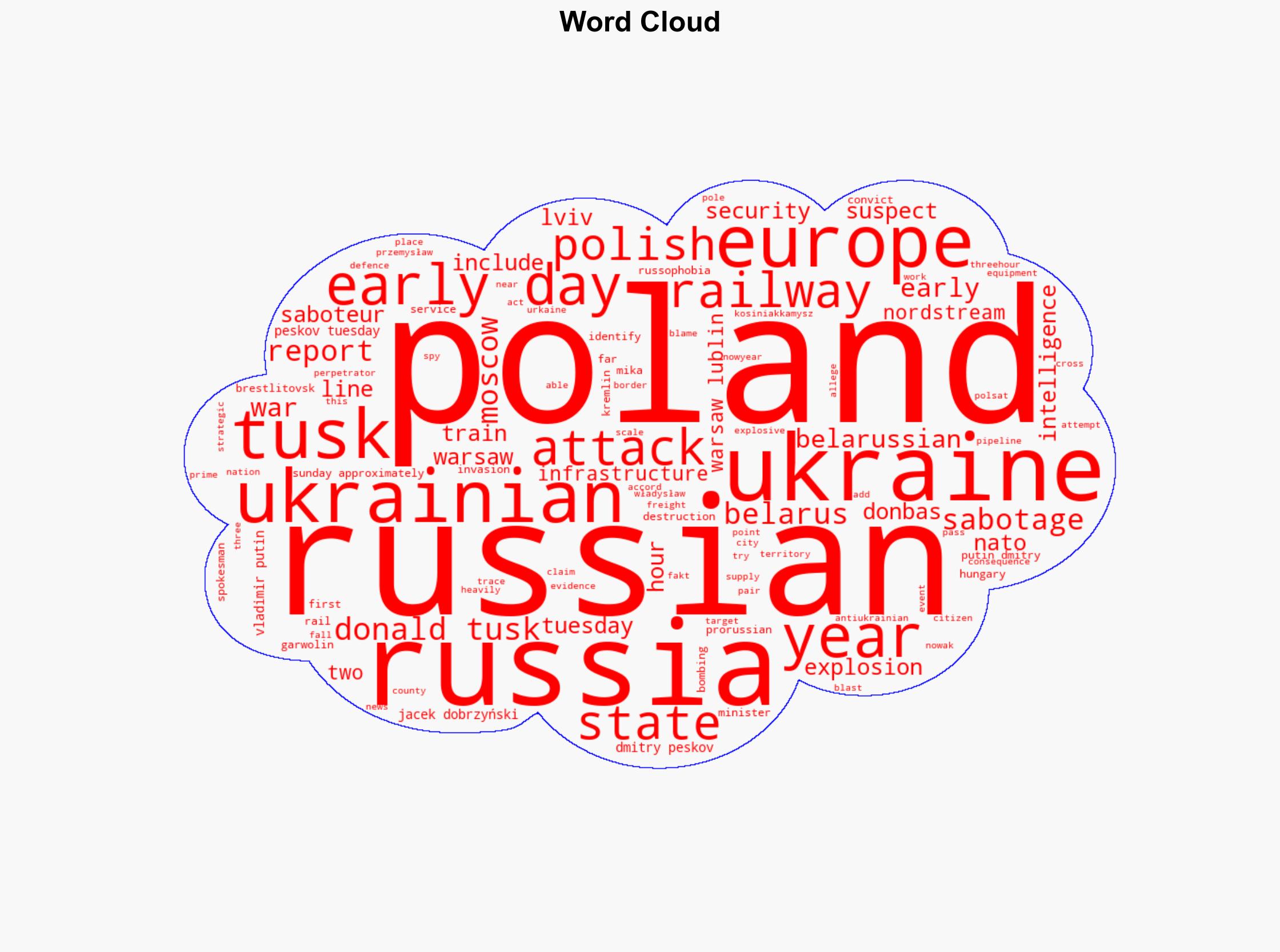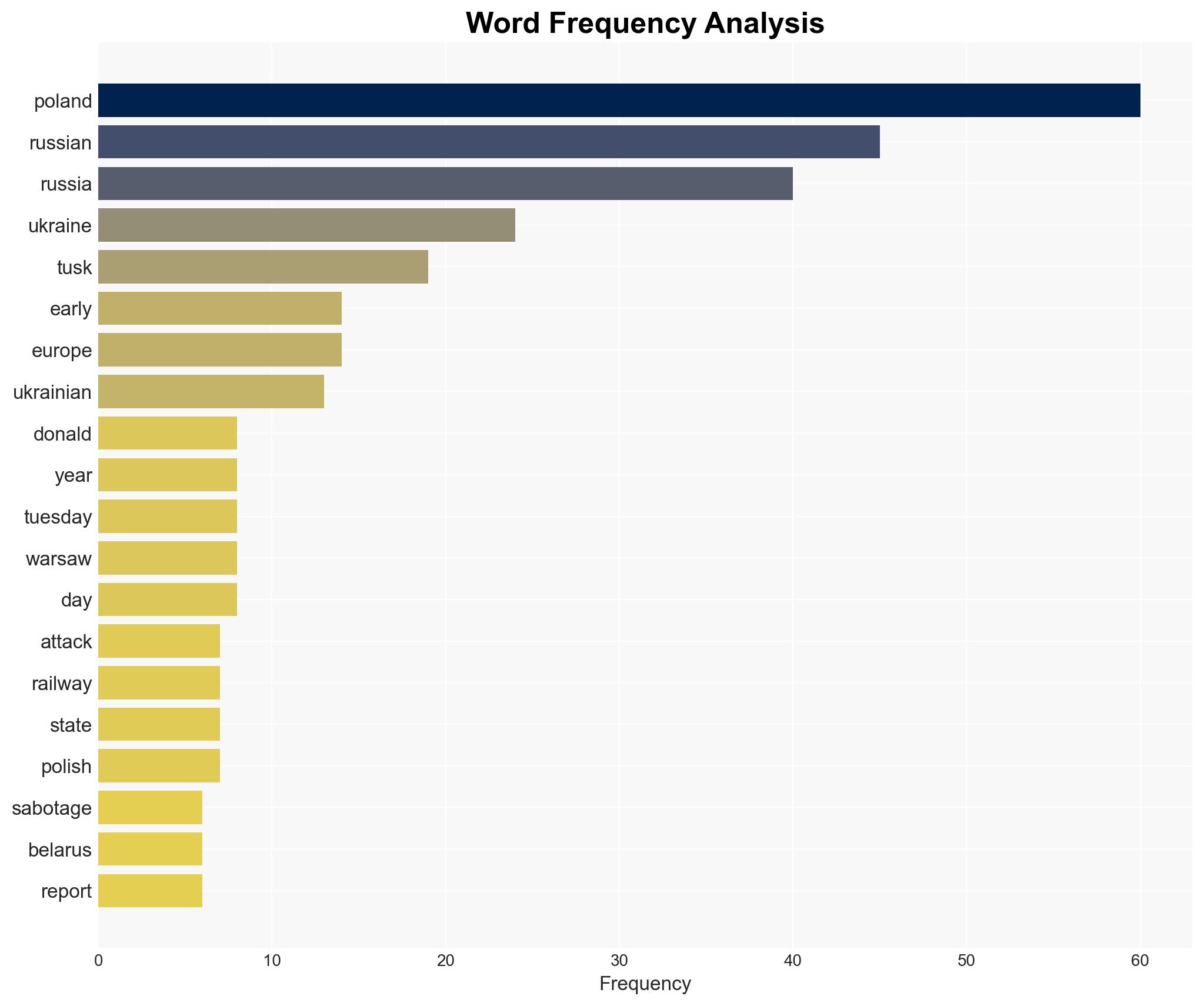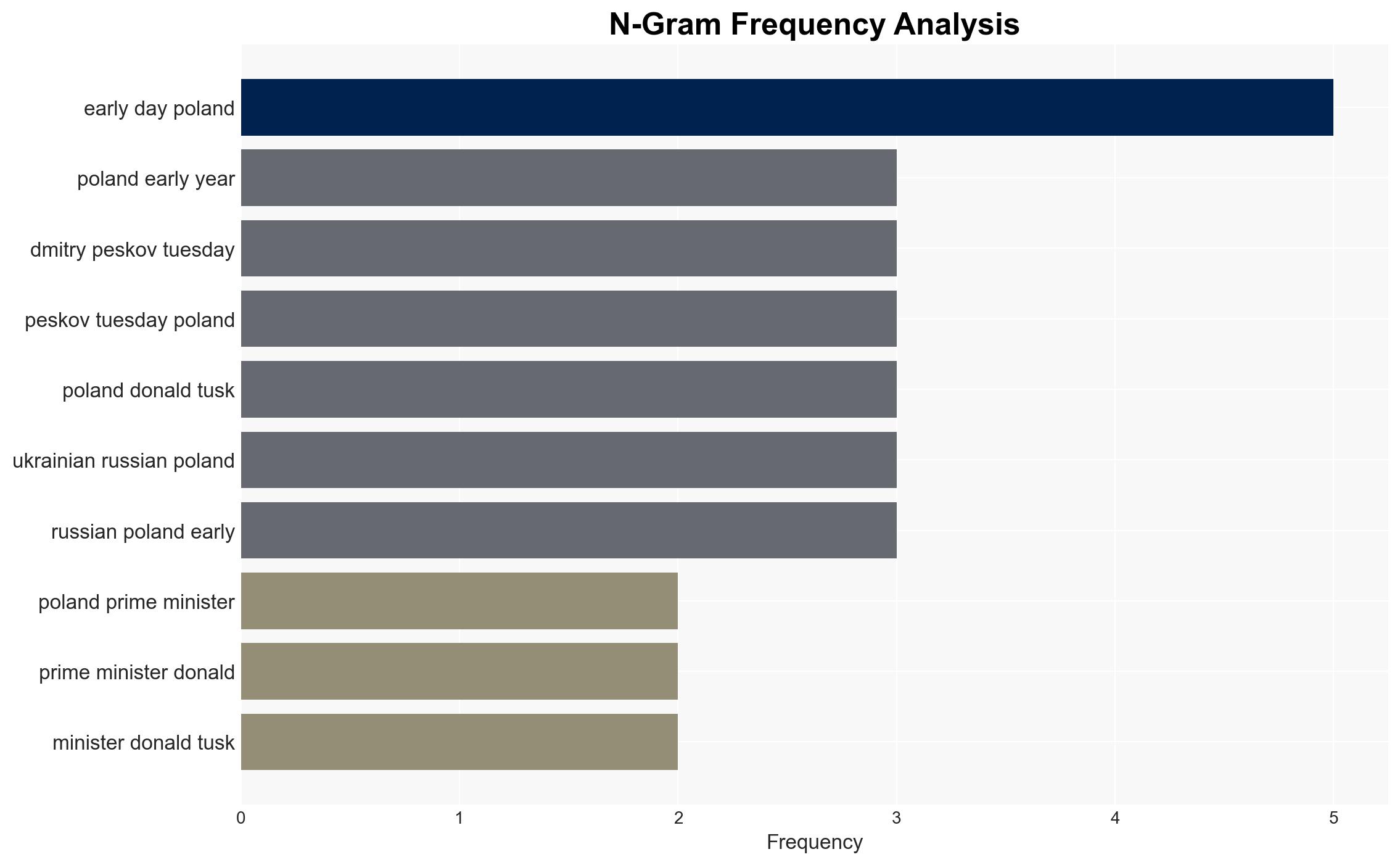Poland Says Ukrainian Citizens Working For Russian Intelligence Responsible For Rail ‘Terror Attack’ – Breitbart News
Published on: 2025-11-18
AI-powered OSINT brief from verified open sources. Automated NLP signal extraction with human verification. See our Methodology and Why WorldWideWatchers.
Intelligence Report:
1. BLUF (Bottom Line Up Front)
With a moderate confidence level, the most supported hypothesis is that Ukrainian citizens, potentially acting on behalf of Russian intelligence, conducted the rail attack in Poland to disrupt NATO supply lines and sow discord between Poland and Ukraine. Recommended actions include enhancing border security, increasing intelligence sharing with NATO allies, and conducting a thorough investigation to confirm the identities and affiliations of the suspects.
2. Competing Hypotheses
Hypothesis 1: Ukrainian citizens, working for Russian intelligence, executed the attack to disrupt NATO supply lines and create tension between Poland and Ukraine.
Hypothesis 2: The attack was a false flag operation orchestrated by Polish or other external actors to frame Russia and escalate tensions, possibly to garner increased support for Ukraine.
The evidence, including the suspects’ Ukrainian nationality and their escape to Belarus, supports Hypothesis 1. However, the lack of direct evidence linking them to Russian intelligence and the possibility of manipulation by other actors leaves room for Hypothesis 2.
3. Key Assumptions and Red Flags
Assumptions: The suspects’ Ukrainian nationality and their escape route imply Russian involvement. The attack’s timing and location suggest strategic intent.
Red Flags: The rapid identification and escape of suspects raise questions about operational security and potential insider assistance. The use of minimal explosives suggests either a botched operation or an intent to intimidate rather than cause significant damage.
Deception Indicators: Russian denials and counterclaims of a false flag operation could be attempts to deflect blame. Conversely, Polish narratives might be influenced by domestic political pressures.
4. Implications and Strategic Risks
The attack could exacerbate tensions between Poland and Ukraine, potentially weakening NATO’s unified stance against Russia. It may also embolden further sabotage attempts on critical infrastructure across Europe. The incident highlights vulnerabilities in NATO’s logistical chains and the potential for hybrid warfare tactics to destabilize regional security.
5. Recommendations and Outlook
- Enhance border security and surveillance, particularly along routes to Belarus.
- Increase intelligence sharing and coordination with NATO allies to preempt similar threats.
- Conduct a comprehensive investigation to verify the suspects’ identities and affiliations.
- Best-case scenario: The perpetrators are apprehended, and the incident strengthens NATO-Ukraine cooperation.
- Worst-case scenario: Escalation of sabotage activities leads to significant disruptions in NATO operations and increased regional instability.
- Most-likely scenario: Continued low-level sabotage attempts with limited impact but heightened security tensions.
6. Key Individuals and Entities
Donald Tusk (Poland Prime Minister), Jacek Dobrzyński (Polish Intelligence Agency Spokesman), Dmitry Peskov (Russian Presidential Spokesman), Władysław Kosiniak-Kamysz (Poland Defence Minister).
7. Thematic Tags
Structured Analytic Techniques Applied
- Cognitive Bias Stress Test: Expose and correct potential biases in assessments through red-teaming and structured challenge.
- Bayesian Scenario Modeling: Use probabilistic forecasting for conflict trajectories or escalation likelihood.
- Network Influence Mapping: Map relationships between state and non-state actors for impact estimation.
Explore more:
National Security Threats Briefs ·
Daily Summary ·
Support us





